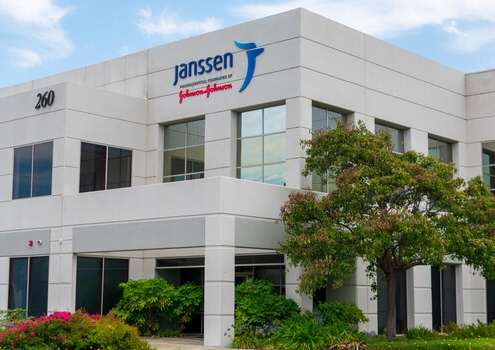Can Janssen Cure Cancer? Company’s 80+ ASH Presentations Suggest It’s On Right Track
Can Janssen Cure Cancer? Its 80+ ASH Presentations Suggest It’s On the Right Track
With 36 Janssen-sponsored studies and another nearly 50 it has supported, the Janssen Pharmaceutical Companies of Johnson & Johnson has a presence in more than 80 of the hematology studies presented at the 62nd American Society of Hematology (ASH) Annual Meeting & Exposition, December 5-8.
“That really highlights the depth and breadth of our hematology portfolio,” Craig Tendler, M.D., VP, Oncology Clinical Development & Global Medical Affairs, Janssen, told BioSpace prior to ASH. The presentations range from early stage to therapeutics that already are the standard of care.
“In our emerging portfolio, we’re presenting data for cilta-cel (B-cell maturation antigen or BCMA- CAR-T) from the Phase 1b/2 CARTITUDE-1 study in relapsed or refractory multiple myeloma,” he said. These data indicate a single low-dose infusion confers early, deep, and durable responses in heavily pre-treated patients with multiple myeloma. Based upon its single-use activity, “we’re quickly accelerating its development and moving it into earlier stage patients.”
The meeting also will be the first time Janssen presents data for its bispecific antibodies talquetamab. It also is presenting data for teclistamab. Both programs are for patients with relapsed or refractory multiple myeloma. Most of the data for those programs are from refractory patients who have undergone five or six lines of therapy. In Phase I trials, talquetamab triggered an overall response rate of 78% and appears to support weekly dosing. The other bispecific, teclistamab, elicited “deep and durable responses,” supporting Phase II monotherapy trials and future combination studies.
“Now that we’ve demonstrated single therapy activity, we’re assessing them for earlier stages of the disease, similar to what we’re doing in our cilta-cel program,” Tendler said.
Both the talquetamab and teclistamab programs are likely to be even more effective when used in less heavily-treated patients than those in the Phase I studies. As he explained, “Their immune system will be stronger and the disease burden will be less. Some of these immune-based mechanisms also may be more effective at delaying or preventing disease progression if they are used earlier.”
The side effects of these immune-based therapies, which activate T cells or cause them to expand are common to the category, Tendler said. “Cytokine release syndrome (with fever, shaking, chills, and blood pressure problems), and neurotoxicity are well described in patients with immune-based treatments. With our agents, most side effects are mild to moderate and some are reversible. We will continue to monitor them closely.”
In Janssen’s later stage portfolio, “We are presenting key updates for both Darzalex® (daratumumab) and Imbruvica® (ibrutinib), involving several drug combinations. We will show advancements of how we optimized those drugs in combination and individual drug regimen,” Tendler said.
The data from Imbruvica® may be among the most exciting. In chronic lymphocytic leukemia (CLL) patients who showed undetectable minimal residual disease after 15 months of combination therapy with Imbruvica and Venclexta, a study shows treatment can be stopped with no ill effects. The randomized, placebo-controlled study, showed that patients who were randomized by uMRD status to receive either placebo or Imbruvica monotherapy after the combination treatment period ended exhibited comparable “one-year disease-free” survival rates. “It needs more follow-up, but results seem encouraging,” Tendler said.
These successes to date of these programs are a reflection of the importance Janssen puts on sourcing innovation wherever it emerges. “Being a large pharmaceutical company that has shown a commitment to the multiple myeloma space allowed us to be a partner of choice for Genmab A/S, our partner on the Darzalex program. We built on that, developing a platform for the novel bispecific antibodies talquetamab and teclistamab.”
Janssen’s commitment to developing a cure for multiple myeloma, coupled with its big pharma expertise and resources, helps it attract additional partners to further a range of innovations.
The company is always interested in collaborations, he stressed. “We haven’t cured cancer, so we’re very aggressive, looking for internal and external possibilities that can complement our pipeline or, when used building blocks in combination regimens, could become transformational. We’re hoping for curative regimens.”
Some of those possibilities also emanate from JLABS research. “JLABS is another approach to bring innovation at its earliest stages into Janssen. We provide the resources, space and, most importantly, the expertise to support some of the earliest efforts of entrepreneurs,” Tendler said. Some of the technology that has emerged from JLABS has contributed to study oversight or other therapeutic approaches, but not to the programs being presented at ASH this year.
That Janssen was able to advance so many programs this year, despite the COVID-19 pandemic, is a testament to its commitment to bring forward, what Tendler called “the most promising regimen with quality data from well-conducted studies. All these programs can’t be done if we work alone, so we also work with scientists and thought leaders around the globe” to foster continual innovation, provide the data regulators and third payers need to see, and support patients in multiple countries.
BioSpace source:




